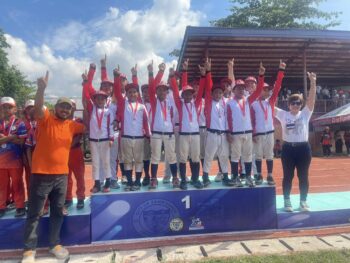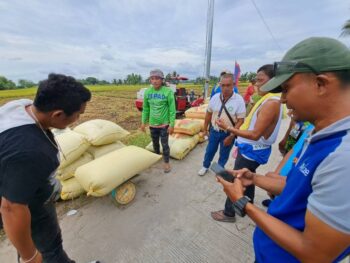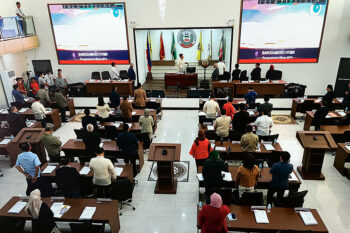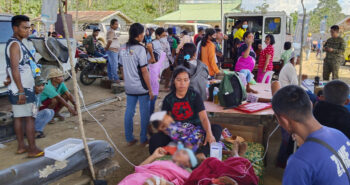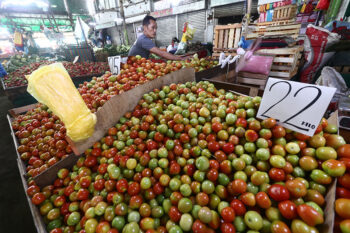DAVAO CITY (MindaNews/ 10 Nov) — A week before Secretary Delfin Lorenzana declared the end of the Marawi siege on October 23, 2017, Lt. Gen. Carlito Galvez of the Western Mindanao Command was quoted as saying that they were looking into three options for rehabilitating Marawi. First, rebuild damaged structures; second, relocate residents whose homes were damaged to another area; and third, put up an entire new city in another place, with Marawi’s destroyed areas kept as a reminder of the war. Hopefully, Task Force Bangon Marawi, which is charged with assessing and planning recovery, will broaden its options and give premium to civilian perspectives.
Civilian views, particularly local ones, are needed to surface concerns, discuss and examine options, and build agreements on the whys, whos, hows, whats, wheres, whens, and wherefores of the recovery and rehabilitation of Marawi and Lanao del Sur. For starters, they will likely say that the three options articulated by the military are not mutually exclusive and should be part of a comprehensive and integrated set of measures.
Unlike other post-war experiences in which the Philippine government mainly rebuilt damaged public infrastructure and left rural communities to deal with damages to houses and economic facilities, there is no ignoring the swath of destruction in nearly the entire eastern part of Marawi City’s urban barangays, and sections of the western area.
Government cannot just focus on the restoration of public infrastructure, goods and services in Marawi, and leave the rest to private means. The horrendous levels of damage make unrealistic any expectations that private resources could be relied on to fund reconstruction. By the City Government’s initial reckoning, more than 1000 houses were partially to totally damaged at an estimated PhP4 billion and economic costs at another PhP4 billion. Many of the destroyed structures were not just domiciles, but also places of business. Enterprising Meranaws used lower floors for their economic activities and lived on upper levels.
The current focus on construction of temporary and permanent shelters, while important, is inadequate in assisting internally displaced persons (IDPs) find durable solutions to their predicaments.
The Recovery, Rehabilitation and Peacebuilding Plan for Marawi and Province of Lanao del Sur, the preparation of which was anchored by the Provincial Government with the support of the United Nations Development Programme, applied the Inter-Agency Standing Committee Framework on Durable Solutions for IDPs to come up with particular tracks that are applicable to Marawi under 1) sustainable reintegration at the place of origin or “return”; 2) sustainable local integration in areas where IDPs take refuge or local integration; and 3) sustainable integration in another part of the country or settlement elsewhere. Partners are needed to help operationalize the tracks.
IDPs naturally desire to return to Marawi. This will be a big challenge in the case of the estimated 84,570 residents of 33 barangays adjudged by the Marawi LGU to be “most affected” and who account for 41% of Marawi’s population. Unexploded ordnances, improvised explosive devices, debris and other risks make rehabilitation complicated.
For those who are originally from other places in Lanao del Sur, the notion of “return” perhaps would more realistically be going back to their home municipalities rather than an immediate return to the city. LGUs around Lake Lanao already signified readiness to absorb willing IDPs. But a combination of measures is needed to entice IDPs to go back to their places of origin.
Traditionally, returning IDPs are provided with pabaon or balik-bayan cash assistance. But it is a passive strategy and insufficient incentive for those who left their hometowns in the first place for better economic opportunities elsewhere.
Sustainable return would be a more immediate to short-term option for the 39,864 residents who come from 15 barangays considered “less affected” and those 83,536 residents of 48 barangays regarded “indirectly affected.”
IDPs who would opt for integration in host communities or settle elsewhere have to be supported so that their choices are informed, rather than made by default. Arrangements would have to be made with the receiving LGUs that would have to deal with additional demands on their services.
In planning activities conducted by the Marawi City and Lanao del Sur Provincial Governments, participants recommended the creation of a funding facility from which IDPs could avail to rebuild homes.
Owners of private schools and hospitals in Marawi affected by the war are likewise looking for funding windows. While distinguished as home to the Mindanao State University (MSU)-Marawi Campus, it also has a high number of private institutions: 45 private schools offered elementary and secondary education, and 21 CHEd-supervised institutions provided higher education prior to May 2017. There were also 15 private hospitals.
Beyond the availability of financing, Meranaws prefer that resource facilities are halal or Shari’ah-compliant and at the very least not charge interest, which Islam prohibits.
Such facilities would have to take into account and mitigate against risks of corruption and poor repayment. But opportunistic behaviors are easier managed and even prevented than the stagnation, decay and their numerous effects that would surely occur if dedicated resources are not made available to Marawi and Lanao del Sur.
Rather than making a memorial of damaged areas and building an entirely new city, there have been suggestions to not abandon and instead expand Marawi’s commercial complex. After all, it will be up to the peoples of Lanao del Sur to decide on why, what and how they will memorialize.
Vital to the comprehensive healing of Marawi and Lanao del Sur—for indeed, rehabilitation, recovery and memorialization are healing-oriented—is knowing what happened to whom, who did it, and why. Civilians are right to ask for an accounting of the war. Jubilation over the military success in Marawi does not preclude obtaining answers to questions about its proportionality—whether security sector actions, particularly the aerial bombings, were not excessive in relation to the sought concrete and direct military advantage. The principle of distinction in international humanitarian law also requires that the identities of the estimated 900 killed who were allegedly part of the combined Dawla Islamiyya and Abu Sayyaf forces are investigated to ascertain that they were not civilians who had been caught in the crossfire. Effective civilian involvement in such investigations is a must, as is making public the results.
Giving premium to “civilians” also means making sure that diverse voices are heard: women and men of various ages, economic backgrounds, social standing, beliefs, and ethnicities. This would help guard against schemes of new or returning elites to hijack, manipulate, and take advantage of post-crisis developments.
Many supporters will come to the aid of Marawi and the peoples of Lanao del Sur, bringing their chosen frameworks, priorities, approaches and processes. Paying attention to civilian voices and visions would help ensure that the situation moving forward does not lead to more alienation, marginalization, and conflicts.
(MindaViews is the opinion section of MindaNews. Mags Z. Maglana is a Mindanawon who has worked in various capacities over the past 30 years for peace, good governance, sustainable development, and the promotion of human rights. Please email feedback to magszmaglana@gmail.com)


